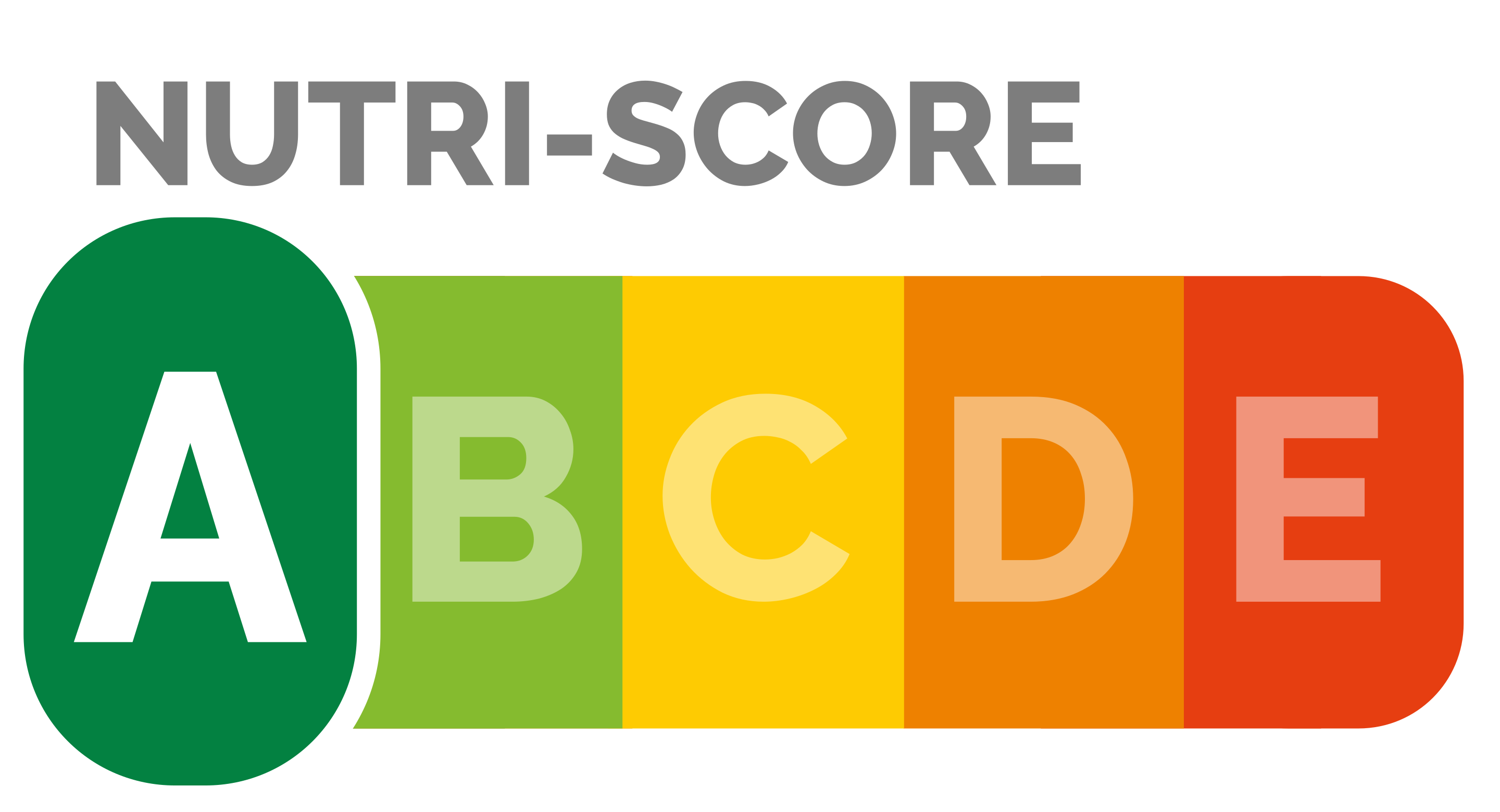Better decode food labels
If a healthy diet has a beneficial effect on health, namely the prevention of cancers, cardiovascular diseases, as well as obesity and osteoporosis, on the other hand, a poor diet will promote the aforementioned pathologies. It is therefore essential to choose the right foods for your plate, but how to proceed?
To make your choices, it is essential to keep a critical mind when faced with the various health claims on products, to learn how to decode labels, and especially to identify additives.
How to read labels?
Mandatory Information
- The product name, the list of ingredients in descending order (from most present to least present), as well as the presence of GMOs and additives. Since 2016, the nutritional value must be mentioned and indicated per 100 grams.
- Regarding sugar, the total carbohydrates (starch + simple sugars) are mandatory. On certain products, the amount of simple sugars and complex sugars (starch) is indicated separately.
- For salt (NaCl), it is not mandatory to mention the salt (NaCl) as a whole, often only the sodium (Na) is mentioned (1 gram of Na is equivalent to 2.5 grams of salt).
- Finally, for fats (lipids), since July 2007, it has been mandatory to mention two percentages (on the total weight and dry weight).

The expiration date:
Date of Minimum Durability (DMD) or « Best Before » date
Means: to be consumed until ...
- This is a mandatory date that concerns microbiologically highly perishable food products (meat, fish, prepared dishes, etc.).
- Never freeze these products if the DMD is near or has passed
Best if used by date
Means: to be consumed preferably before ...
It will be noted in the following way:
- If the durability is less than 3 months, it will be noted in the form day/month.
- If the durability is between 3 and 18 months: month/year.
- If the durability is more than 18 months: year.
- If the date has passed, there is no danger to health, however, there is a possibility of loss of all or part of its qualities (taste, texture, etc.).
Recommended use-by date
It concerns eggs and is set at 28 days after laying.
- From 1 to 9 days: extra-fresh (raw use possible).
- From 9 to 28 days: fresh (cooked or for pastry).
Nutritional and health claims
These are the statements, images, or symbols that highlight the nutritional and/or health benefits of foods (low in sugar, rich in omega 3, source of calcium, grandmother’s recipe, etc.).
Can we trust them?
- Claims about vitamins and/or minerals:
- Appears on the product if the content is at least equal to 15% of the daily recommended intake per 100g.
- Claims about fiber:
- If fiber content > or = 3g per 100g or fiber content > or = 1,5g per 100Kcal.
- Claims about sugar:
- « Sugar-free » : 0,5g of sugar per 100g or 100ml of product.
- « Reduced sugar » : At least 30% less sugar than the original product.
- « No added sugars » : No addition of sugar during manufacturing. May still contain naturally present sugars (e.g. fruit juice, compote, etc.).
- Claims about fats:
- « Fat-free » : Less than 0,5g of lipids per 100g or 100ml of product.
- « Reduced fat » : At least 30% less lipids than the original product.
- « Low in fat » : No more than 3g of lipids per 100g or 1,5g/100ml of product.
- Claims about salt:
- « Salt-free » : Maximum 0,005g of sodium per 100g or 100ml of product.
- « Low in salt/sodium » : Maximum 0,12g of sodium per 100g or 100ml of product (equivalent to 0.3g of salt).
- « Reduced salt/sodium » : At least 25% less salt than a similar product.

The Nutri-score
The Nutri-score was introduced in France in 2017 on a voluntary basis. It consists of a logo with 5 letters and 5 colors, aiming to inform about the nutritional quality. Some products do not have a Nutri-score, such as aromatic herbs, tea, coffee, fruits, vegetables, and alcoholic beverages. Additives and pesticides are not included in the calculation.
In addition to France, the Nutri-score is used in Luxembourg, Belgium, Germany, Switzerland, and the Netherlands.
How is the Nutri-score calculated?
The following are taken into account for 100 grams or 100 milliliters of product:
In nutrients - foods to favor - (fiber, protein, fruits, vegetables, legumes, nuts...) and in nutrients to limit (calories, saturated fatty acids, sugar, salt).
In 2024, the calculation method for the Nutri-score has evolved (manufacturers have a two-year deadline to apply it). The same elements are taken into account, to which is added the consideration of sweeteners (diet sodas see their Nutri-score changed from B to C or even E) and, on the other hand, the bonus for oils rich in good fat and white meat. This change affects 30 to 40% of products.
How to use the Nutri-score effectively
It allows you to compare similar products from different brands (cookies, breakfast cereals, for example), to compare products consumed at the same time (yogurt and dessert cream, for example) or to compare products from the same category (soft drinks, for example).

Food additives:
These are chemical or natural ingredients added to food products, which can be classified into several categories.
What are the different categories of additives?
- Colorants (natural and artificial): E 100 and following (for example, E 102, E 104, etc.).
- Preservatives: E 200 and following.
- Antioxidants: E 300 and following.
- Emulsifiers, Texture agents: E 400 and following.
- Sweeteners: E 950 to 964.
- Flavor enhancers: E 600 and 700.
In conclusion,
To preserve your health, it is essential to read labels before consuming. In general, limit your consumption of processed products and prepared meals, avoid foods that contain more than 5 additives, cook « at home » and « in season », and prioritize organic products (i.e., those that allow a maximum of 4 chemical additives).

Useful Apps
- Open food facts - https://openfoodfacts.org/
- Yuka - https://yuka.io/
